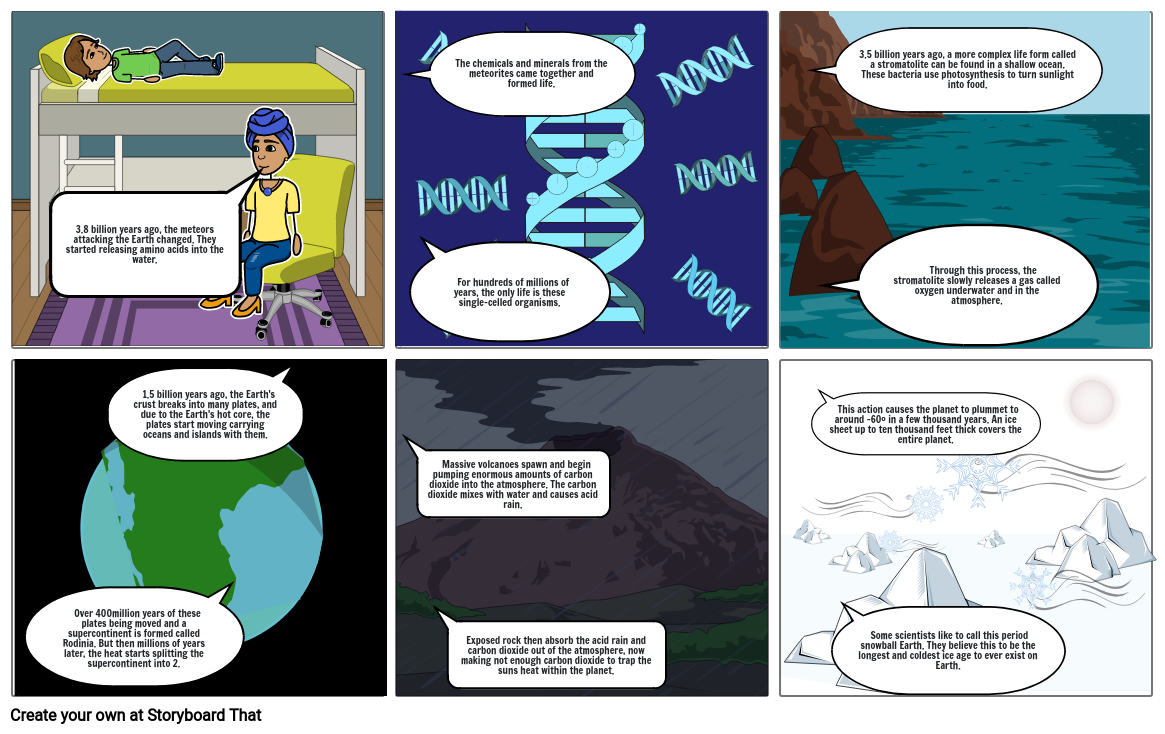Unknown Story

Storyboard Text
- 3.8 billion years ago, the meteors attacking the Earth changed. They started releasing amino acids into the water.
- The chemicals and minerals from the meteorites came together and formed life.
- For hundreds of millions of years, the only life is these single-celled organisms.
- 3.5 billion years ago, a more complex life form called a stromatolite can be found in a shallow ocean. These bacteria use photosynthesis to turn sunlight into food.
- Through this process, the stromatolite slowly releases a gas called oxygen underwater and in the atmosphere.
- Over 400million years of these plates being moved and a supercontinent is formed called Rodinia. But then millions of years later, the heat starts splitting the supercontinent into 2.
- 1.5 billion years ago, the Earth's crust breaks into many plates, and due to the Earth's hot core, the plates start moving carrying oceans and islands with them.
- Massive volcanoes spawn and begin pumping enormous amounts of carbon dioxide into the atmosphere. The carbon dioxide mixes with water and causes acid rain.
- Exposed rock then absorb the acid rain and carbon dioxide out of the atmosphere, now making not enough carbon dioxide to trap the suns heat within the planet.
- This action causes the planet to plummet to around -60° in a few thousand years. An ice sheet up to ten thousand feet thick covers the entire planet.
- Some scientists like to call this period snowball Earth. They believe this to be the longest and coldest ice age to ever exist on Earth.
Över 30 miljoner storyboards skapade

